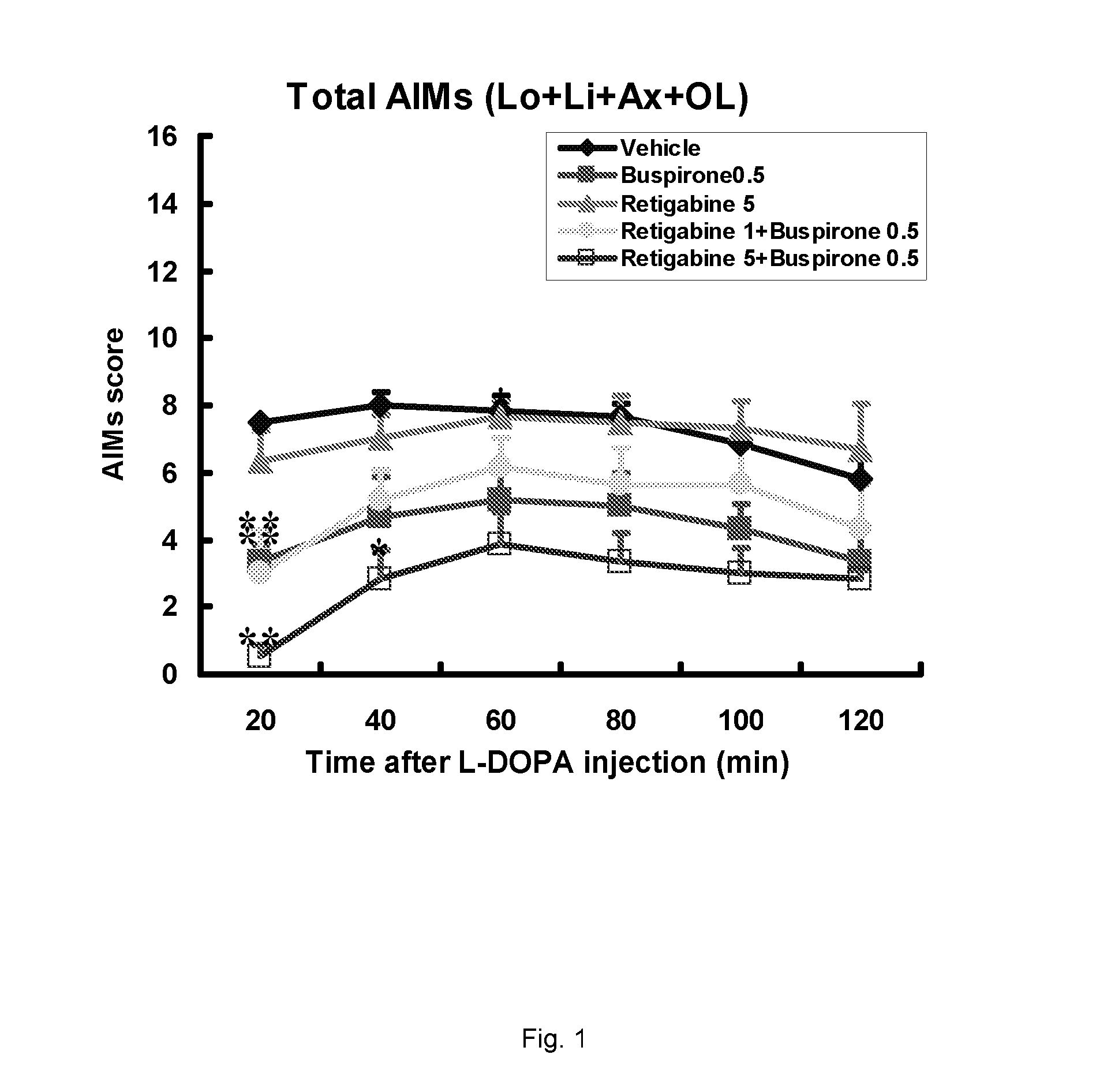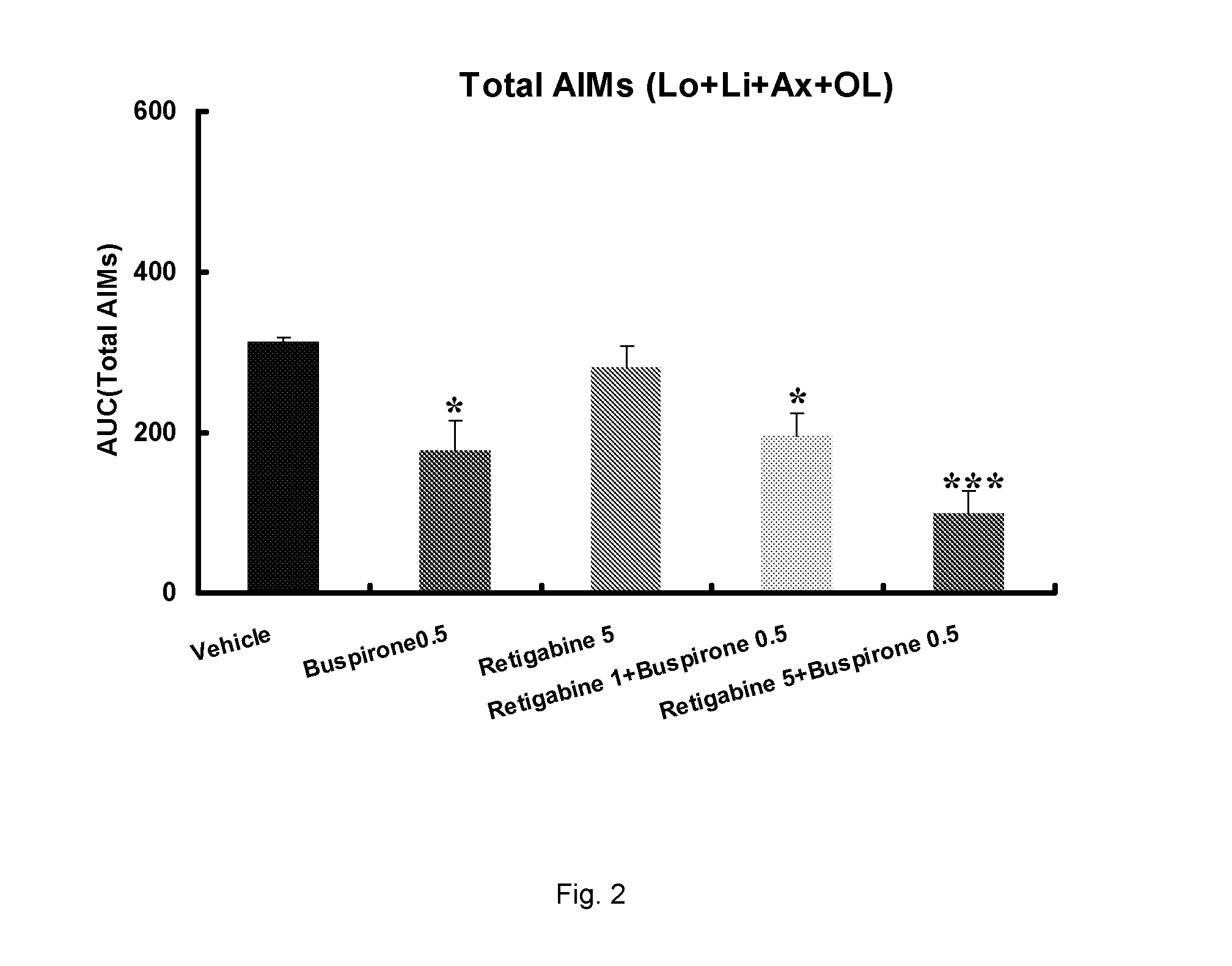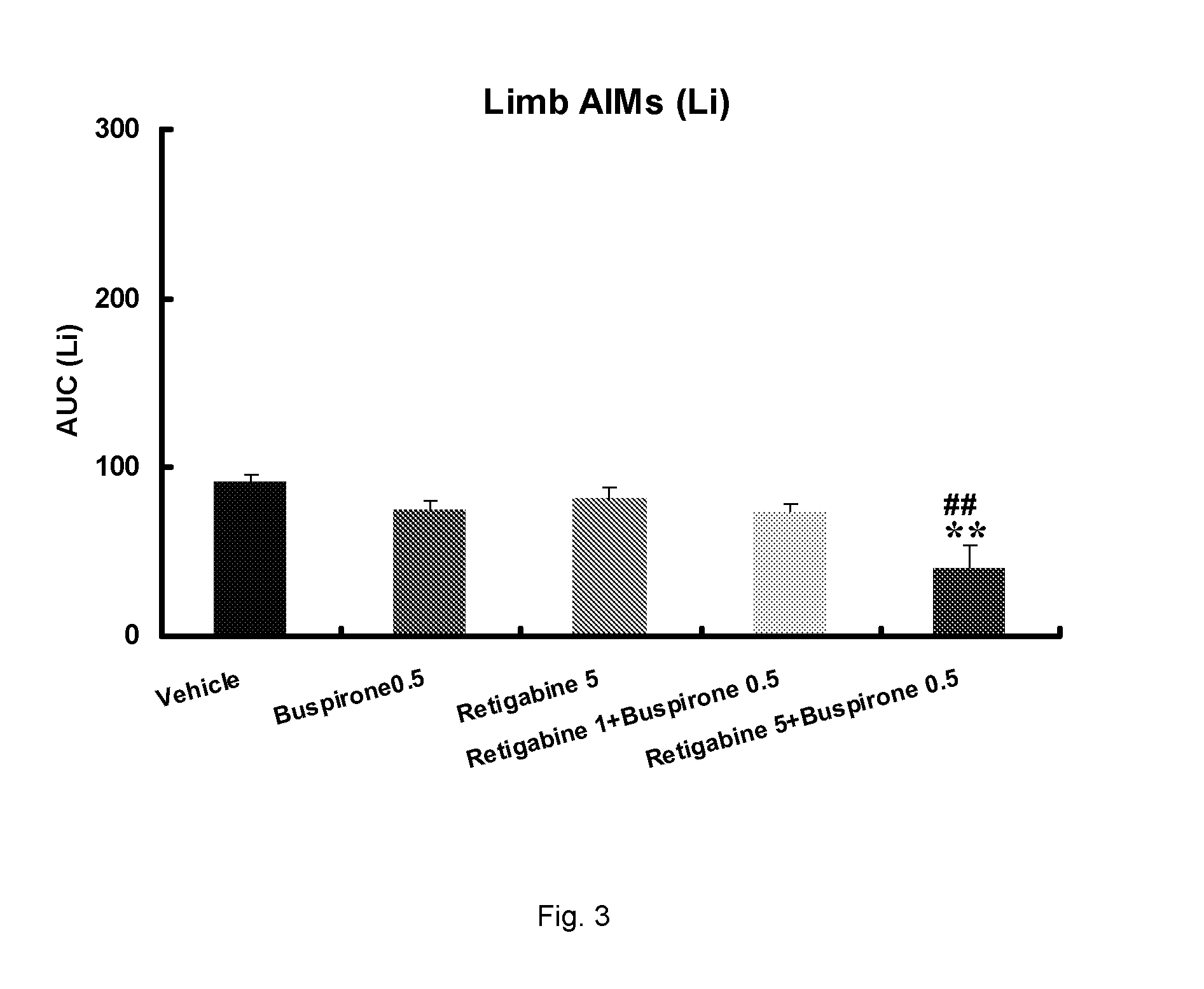Use of serotonin receptor agonists for treatment of movement disorders
a technology of serotonin receptor and somatosensory receptor, which is applied in the direction of nervous disorders, heterocyclic compound active ingredients, drug compositions, etc., can solve the problems of inability of patients to sit still or remain motionless, inability to effectively influence the dopamine level in the synapse, and often gives rise to dyskinesia (diminished voluntary movements and involuntary movements)
- Summary
- Abstract
- Description
- Claims
- Application Information
AI Technical Summary
Benefits of technology
Problems solved by technology
Method used
Image
Examples
example i
Determination of Activation of the Serotonin 5-HT1 Receptors
[0212]The [35S]-GTPγS assay can be used to determine the ability of a compound to activate one or more cloned receptors of the serotonin 5-HT1 receptor family and thus act as a 5-HT1 receptor agonist. When using such assays, a selective agonist would be an agonist which only activates one type of 5-HT1 receptor, whereas no or no significant activity is observed with other types of expressed 5-HT1 receptor. A combined agonist which activates several 5-HT1 receptors would in the same type of assay activate several different expressed 5-HT1 receptors.
Membrane Preparation
[0213]Assays are performed with cells expressing one or more of the cloned human 5-HT1A, 5-HT1B, 5-HT1D and 5-HT1F receptors. On the assay day, an aliquot of cells (stored at −70° C.) is thawed and re-suspended in 50 mM Tris-HCl, pH 7.4, and centrifuged at 39,800 g for 10 min at 4° C. The resulting pellet is re-suspended in 50 mM Tris-HCl, pH 7.4, incubated for...
example ii
Determination of Activation of KCNQ Channels
[0217]The KCNQ (Kv7) channels in the brain belong to the family of voltage-dependent potassium channels. Four subunits termed KCNQ2-5 have been identified that form both homo- and heteromeric complexes. KCNQ channel openers, such as retigabine, increase the opening probability of the channels by shifting the voltage-dependency to more negative voltages.
Expression in Xenopus laevis Oocytes
[0218]Female Xenopus laevis are anaesthetized by immersion in a 0.4% (w / v) solution of 3-aminobenzoic acid ethyl ester (Sigma, St. Louis, Mo., USA) for 15-20 min. Ovarian lobes are cut off through a small abdominal incision and subsequently defolliculated by enzymatic treatment with 0.5 mg / mL collagenase type IA (Sigma, St. Louis, Mo., USA) in OR2 solution (in mM: 82.5 NaCl, 2 KCl, 1 MgCl2, 5 HEPES, pH 7.4) for 3 hours. Oocytes are then kept in Modified Barth's Saline (in mM: 88 NaCl, 1 KCl, 2.4 NaHCO3, 0.41 CaCl2, 0.82 MgSO4, 0.3 Ca(NO3)2, 15 HEPES, pH 7....
example iii
Evaluation of the 5-HT1 Receptor Agonist Buspirone and the KCNQ Positive Modulator Retigabine for Treatment of Movement Disorders Associated with Parkinson's Disease and LID
[0222]The present study describes the evaluation of buspirone and retigabine in the 6-OHDA rat model. 6-OHDA (6-hydroxydopamine) is a neurotoxin that selectively kills dopaminergic and noradrenergic neurons and induces a reduction of dopamine levels in the brain. Administration of L-DOPA to unilaterally 6-OHDA-lesioned rats induces abnormal involuntary movements (AIMs). These are axial, limb and oral movements that occur only on the body side that is ipsilateral to the lesion. AIM rat models have been shown useful because they respond to a number of drugs which have been shown to suppress dyskinesia (including PD) in humans.
Animals:
[0223]60 Sprague-Dawley (SD) male rat (bred in house, originally from SLAC Laboratory Animal Co. Ltd) at 9-week of age at body weight of 200 to 250 g from Shanghai SLAC Co. Ltd. arrive...
PUM
| Property | Measurement | Unit |
|---|---|---|
| time | aaaaa | aaaaa |
| time | aaaaa | aaaaa |
| time | aaaaa | aaaaa |
Abstract
Description
Claims
Application Information
 Login to View More
Login to View More - R&D
- Intellectual Property
- Life Sciences
- Materials
- Tech Scout
- Unparalleled Data Quality
- Higher Quality Content
- 60% Fewer Hallucinations
Browse by: Latest US Patents, China's latest patents, Technical Efficacy Thesaurus, Application Domain, Technology Topic, Popular Technical Reports.
© 2025 PatSnap. All rights reserved.Legal|Privacy policy|Modern Slavery Act Transparency Statement|Sitemap|About US| Contact US: help@patsnap.com



